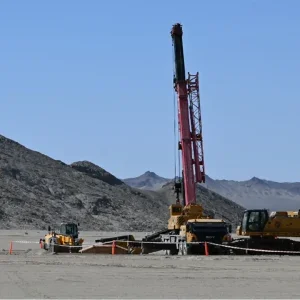
The glory days of the Eagle Ford Shale play as one of the world’s top oil and gas investor attractions have long since passed but a revival could be on the cards over the next four years, according to GlobalData.
The market intelligence firm’s Eagle Ford Shale in the US, 2019 – Oil and Gas Shale Market Analysis and Outlook to 2023 report suggests its production decline is reversing and operational interest is beginning to grow.
The play’s northern section comprising the Burleson and Brazos counties remains largely underdeveloped, while the overlying Austin Chalk formation has also been sparking investor interest of late.
Senior oil and gas analyst at GlobalData Adrian Lara said: “Eagle Ford definitely remains a sound investment for oil and gas operators.
“During the past few years the play has made a slow but sure comeback but this performance is at times not as noticeable because it neighbours the super attractive Permian Basin.
“Still, the well economics of the play are robust with current commodity prices and operators are starting to assess areas outside the core zone of the play, moving out from the so-called Karnes Trough.

“Also of relevance is that some operators are re-assessing the production upside of targeting several benches such as the overlying Austin Chalk formation.
“The recent mergers and acquisitions activity also confirms how operators try to increase their operations in the Eagle Ford; this was in fact a main driver in Chesapeake Energy’s acquisition of WildHorse Resource Development.
What is the Eagle Ford Shale?
Eagle Ford is a sedimentary shale rock formation, located in Texas, which has been considered as one of the most profitable formations for exploration and production activities in the US.
The major counties for prolific crude oil and condensate production within the play, which is home to various condensates and dry gas resources, include Karnes, De Witt, La Salle, Dimmit and Gonzales.
Meanwhile, Webb, Karnes, De Witt, Dimmit and La Salle are its biggest producers of natural gas.

In 2010, Eagle Ford was one of the most actively drilled targets for unconventional oil and gas in the US but spending in the area has since dropped sharply, falling from $30bn (£23bn) in 2014 to $10bn (£7.5bn) in 2016.
Given its proximity to major hydrocarbon processing facilities and export terminals on the Gulf Coast, the Eagle Ford allows for better oil and natural gas pricing in comparison to the Permian Basin, according to GlobalData.
The firm identifies companies such as EOG Resources, Chesapeake Energy Corporation, Marathon Oil Corporation, ConocoPhillips and Noble Energy as the top producers in the Eagle Ford Shale in 2018.






